By Prof. Pierre Oberling
IntroductionKurdish tribes are found throughout Iranian world including Iran-proper, eastern Anatolia and northern Iraq, but very few comprehensive lists of them have been published.The one most often cited is that of François Bernard Charmoy, which was based on the Sharaf-nāma by the 16th-century Kurdish historian Sharaf-al-Din Bedlisi (q.v.; I, pp. 55-85).
An Iranian Kurdish girl.
An attempt to present an up-to-day list of Kurdish tribes follows.Western Azarbaijan Province
The most important Kurdish tribes in that region are Jalâli (q.v.; around Mâku), Milân (also around Mâku), Haydarânlu (on the Turkish border, southwest of Mâku), Donboli (q.v.; Azeri-speaking, around Khoy and Salmâs), Korahsunni (Kurdicized Azeris, southwest of Khoy), Shekkâk (south of Salmâs), Herki (around Urmia), Begzâda (south of Urmia), Zerzâ (on the Iraqi border, west of Ošnaviya), Pirân (on the Iraqi border, southwest of Naqada), Mâmaš (around Naqada), Mangur (southwest of Mahâbâd), Mokri (around Mahâbâd), Dehbokri (east of Mahâbâd), Gowrâk (south of Mahâbâd, around Sardašt and northwest of Saqqez), Malkâri (around Sardašt), Suseni (west of Saqqez), Fayzµ-Allâh-begi (northeast of Saqqez). (For details, see Afšâr Sistâni, pp. 137-95; Komisiun-e melli, pp. 117-29.).
East Azarbaijan province in Iran (right) and a traditional rug woven by Herki Kurds (left) (Picture source for left frame only: Kaveh Farrokh’’s lectures at the University of British Columbia’s Continuing Studies Division and Stanford University’s WAIS 2006 Critical World Problems Conference Presentations on July 30-31, 2006).
Eastern Azerbaijan Province
In Qarâjadâgh (today Arasbârân), that is,
the region between the Aras river and the Sabalân mountain range, there
are six Shi’ite, Turki-speaking tribes of Kurdish origin: Ùalabiânlu
(q.v.), Mohammad Khânlu, Hosaynâklu, Hâji ‘Alilu (q.v.), Hasan Beglu,
and Qarâchorlu. In Khalkhâl, that is, the region between the Bozghuš
mountains and the Qezel Uzen (owzan) river, there are seven Shi’ite,
Turki-speaking tribes of Kurdish origin: Delikânlu, Kolukjânlu (an
offshoot of the Shekkâk), Shatárânlu (also an offshoot of the Shekkâk),
Ahmadlu, Shâdlu, Rašvand, and Mâmânlu. Finally, there are Shi’ite,
Turki-speaking Shekkâk occupying vast areas northeast and northwest of
Miyâna. (See Afšâr-Sistâni, pp. 109-25; Oberling, 1964; idem, 1961, pp.
52-57, 80.).
A stucco of Zahak in Tabriz
(left) and a 14th century map which (partially) shows the city of Tabriz
as it appeared at that time. The legend of the blacksmith Kaveh, the
legendary hero who defeats the evil Zahak, is an ancient Iranian
folklore tradition that has endured throughout Iran and among Iranian
peoples. The Kurds make a special tribute to kaveh every year when they
celebrate the Iranian new year – the Nowruz (Picture source: Kaveh
Farrokh’’s lectures at the University of British Columbia’s Continuing Studies Division and Stanford University’s WAIS 2006 Critical World Problems Conference Presentations on July 30-31, 2006).
Kordestan Province
The most important Kurdish tribes in this
region are: Saršiv (on the Iraqi border, south of Bâna), Tilaku`i
(Kurdicized Turks, around Sonnata and Zâgha), Bani Ardalân (around Senna
[Sanandaj], Jâf (southwest of Senna [Sanandaj]), Hulilân (southeast of
Kermânšâh), and the following tribes between Kermânšâh (present-day
Bâkhtarân) and the Iraqi border: Gurân, Kalhor, Sanjâbi, Sharafbayâni,
Kerindi, Bâjalân (q.v.), Nânakuli, and Zangana. (See Afšâr-Sistâni, pp.
223-59; Komisiun-e melli, pp. 130-33; also multiple entries in Nikitine
and Arfa.).
Perspectives of the Moshir Divan building at Sanandaj (Picture source: Kaveh Farrokh’’s lectures at the University of British Columbia’s Continuing Studies Division and Stanford University’s WAIS 2006 Critical World Problems Conference Presentations on July 30-31, 2006).
Hamadân Province
According to Mardukh Kordestâni (I, pp. 86 and 98), the Kurdish tribes in this province are: Jamiri, Juzikân, and Shâhjân.
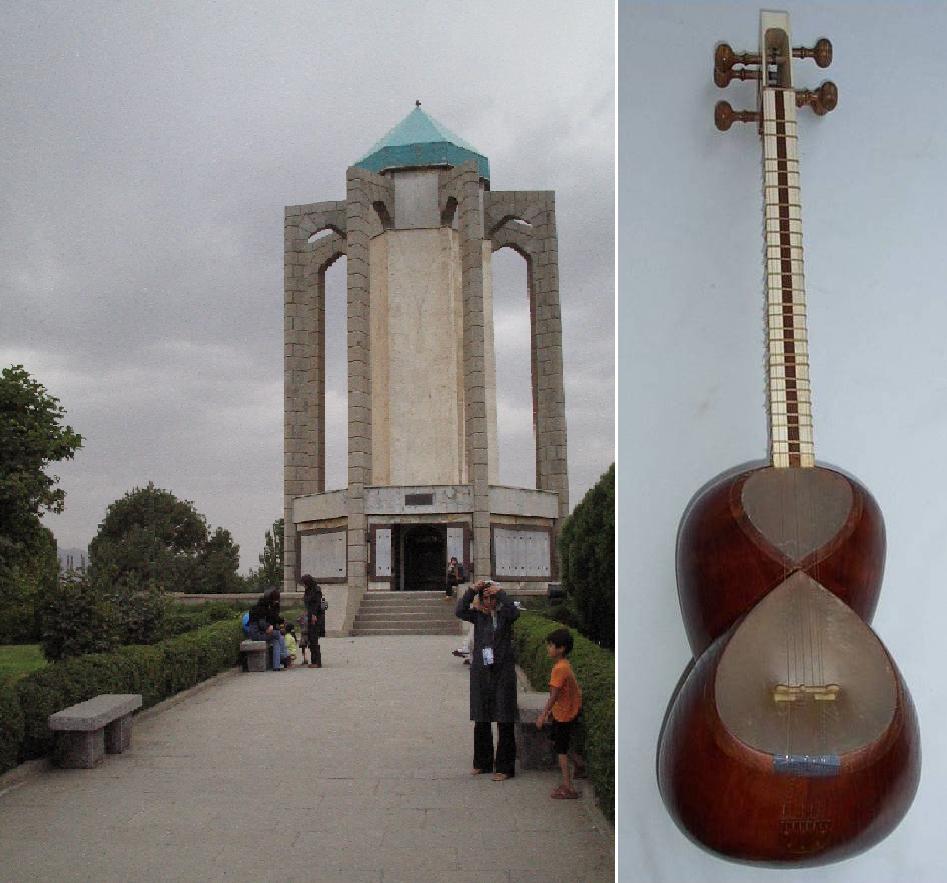
The tomb of Baba Taher in the
city of Hamedan (ancient Ecbatana), capital of Hamedan province (left)
and a Persian Tar stringed instrument (right). Baba Taher is one of the
greatest writers of Persian literature – his poems were also composed in
music. Professor L. P. Elwell-Sutton notes of Baba Taher that “He
could be described as the first great poet of Sufi love in Persian
literature. In the last two decades his do-baytis [Persian quatrains or
two -bayt metre poems] have often been put to music”.
Although the precise dates of his birth date and time of passing remain
unknown, it is generally believed that he may have been a contemporary
of other legendary greats of Persian literature such as Firdowsi and
Avicenna (Ibn Sina) who is also buried in Hamedan. Baba Taher’s works
are also available in other Iranian languages such as Kurdish, Luri, and
Mazandarani. Baba Taher’s poems are derived from the Middle-Persian
(pre-Islamic) dialects known variously as Pahlavi (Picture source: Kaveh
Farrokh’’s lectures at the University of British Columbia’s Continuing Studies Division and Stanford University’s WAIS 2006 Critical World Problems Conference Presentations on July 30-31, 2006).
Luristan Province
According to Oskar Mann (p. XXIII), the
Delfân and Selsela groups of tribes, the Armâ`i tribe of the Tarhân
group of tribes, and the Bayrânvand tribe in the Piš-e Kuh speak Laki.
According to Mardukh Kordestâni (I, pp. 78, 86), both the Itivand and
the Judeki tribes in the Piš-e Kuh are Kurdish. There is also a large
tribe by the name of Kord in the Pošt-e Kuh (Rabino, 1916, pp. 40-45).
Khuzestân Province
There are three groups of Zangana and one
of Jalâli in the Jânneki Garmsir, northeast of Ahvâz. They were brought
there by Nadir Shah (Qâ`em Maqâmi). There was also a tribe by the name
of Âl bu Kord which occupied seven villages on the Kârun river south of
Ahvâz (Lorimer, II, pp. 121, 1042).
Gilân Province
There have been two important Kurdish
tribes in this province: Rišvand (or Rašvand) and ‘Amârlu (q.v.).
According to Rabino, the Rišvand formed part of the Bâbân tribe of
Solaymâniya and were moved to Gilân by Shah ‘Abbâs I. Later, they were
chased out of most of their choice pasturelands by the ‘Amârlu, who were
moved to Gilân from northwestern Persia by Nâder Shah (Rabino, 1916-17,
pp. 260-61; tr., pp. 304-6). The Rišvand now live mostly in Qazvin
province. The ‘Amârlu occupy some fifty villages between Menjil and
Pirâkuh in southeastern Gilân. (See Fortescue, pp. 319-20; Mardukh
Kordestâni, I, pp. 100-1; Afšâr Sistâni, pp. 132-34.).
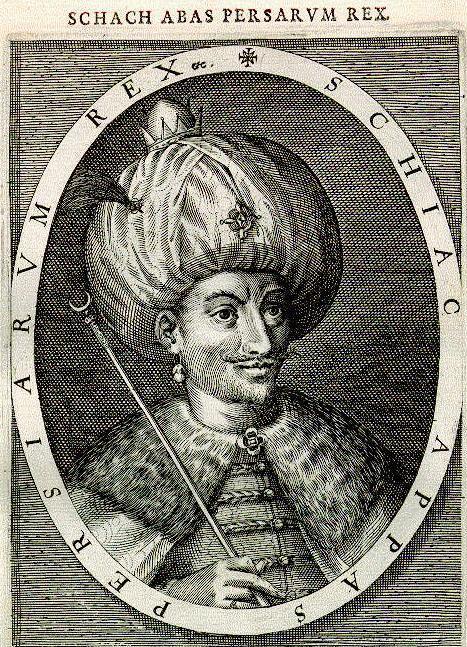
Shah Abbas I (1587-1629) moved
the Rišvand tribe from Suleiminaya (in modern-day Iraqi Kurdistan) to
Gilan. Shah Abbas also commissioned Kurdish prince Sharafeddin to write
the “Sharafname”, a Kurdish epic, in an endeavor to highlight the
long-standing connections of the Iranic Kurds to the Iranian realm.
Mâzandarân Province
There are three major Kurdish tribes in the
province: Modânlu (north of Sâri), Jahânbeglu (north of Sâri), and
Khvâjavand (south of Nowšahr). The Khvâjavand tribe, according to L. S.
Fortescue (p. 317), “was originally brought from Garru´s (q.v.) and
Kurdista´n by Na´der Sha´h.” The Modânlu and Jahânbeglu tribes were
probably also moved to Mâzanderân by Nâder Shah. According to Rabino
(1913, p. 441).
Qazvin Province
The most important Kurdish tribes in this
province are GÚiât¯vand (q.v.), Kâkâvand, Rišvand, and Ma’âfi. The
GÚiât¯vand tribe dwells along the Qezel Uzen and Shâhrud rivers.
According to Parviz Varjâvand (pp. 456-57), it was transplanted from
western Persia by Âghâ Mohammad Khan Qâjâr. The Kâkâvand tribe lives
northeast of Qerva, on the Siâh Dahân-Zanjân road. The Rešvand tribe
occupies the districts of Alâmut and Rudbâr. The Ma’âfi tribe dwells
near the Qazvin-Tehran road (Fortescue, pp. 325-26). According to
Varjâvand (pp. 459-60), there are also small groups of Bâjalân, Behtu`i,
Ùamišgazak, Jalilvand, and Kalhor in the province.
Tehran Province
The Pâzuki tribe is the principal Kurdish
group in the province. According to Albert Houtum-Schindler (p. 50), it
was once a powerful tribe residing near Erzurum in Anatolia; but it was
broken up in the late 16th century, a fragment settling down around
Varâmin and GÚâr. In the Tehran region are also fragments of the
following tribes: Hedâvand, Burbur, Uryâd, Zerger, Kord Bacha, Nânakuli,
and Qarâchorlu (Kayhân, II, p. 111); and in Sâva there are Kalhor Kurds
(Afšâr Sistâni, p. 1115).
Isfahan Province
According to Mardukh Kordestâni (I, p. 79),
there is a Kurdish tribe in this province by the name of Bâzinjân.
Moreover, the name of the town Shahr-e Kord southwest of Isfahan
evidence the existence of Kurds in that region in the past (cf. Kord in
Fârs mentioned below). This is reinforced by the remarks of early Muslim
geographers (Mas’udi, Tanbih, p. 88; EsÂtÂakhri, pp. 98-99, 115; Ebn
Hawqal, p. 265; Moqaddasi, p. 447).
Fârs Province
According to Mardukh Kordestâni (I, pp.
75-117), there are more than thirty small Kurdish tribes in Fârs. Many
of these are undoubtedly remnants of tribes that followed Karim Khan
Zand to Fârs; after the fall of the Zand dynasty, they were absorbed as
clans by the Qašqâ`i tribal confederacy. They include the Saqqez,
Zangana (five separate groups, including one that today forms a clan of
the Kaškuli Bozorg tribe of the Qašqâ`i), Kuruni, Ùegini (q.v.), Burbur
and Uryâd (clans of the Qašqâ`i ‘Amala tribe), Lak and Vandâ (clans of
the Qašqâ`i Darrašuri tribe), Kordlu (a clan of the Qašqâ`i Qarâ Ùâhilu
tribe), and Kord-Shuli. (See Oberling, 1960, pp. 76-84; idem, 1974, pp.
225-31.) References to Kurdish tribes in Fârs, as well as to a town
called Kord in the Isfahan area, go back to the 10th century
(Mas’udi, Tanbih, pp. 88-89; Ebn Khordâdbeh, p. 47; Estakhri, pp. 113
ff., 125; Ebn Hawqal, pp. 264-65, 269, 270-71; Moqaddasi, p. 446).
According to Ebn al-Balkhi, the five major Kurdish tribes of Fârs had
been annihilated during the Arab conquest, and the Kurds that were in
Fârs in the 12th century, other than the Shabânkâra, had been brought
there by the Buyid ‘Azµad-al-Dawla. There were many Kurds in Fârs in the
11th century, including as many as five tribes of Shabânkâra (Ebn
al-Balkhi, tr. pp. 5-13). Although Ebn Balkhi distinguishes the
Shabânkâra from the original Kurdish tribes of Fârs, the name of one of
the Shabânkâra five clans, Râmâni (the other four are Esmâ’ili, Karzubi,
Mas’udi, Shakâni), is identical with that of a Kurdish tribe of Fârs
mentioned in early sources (Estakhri, p. 114; Ebn Hawqal, p. 270;
Moqaddasi, p. 446). The Shabânkâra seized power from the Buyids in Fârs
in 1062 and founded a dynasty of tribal rulers there (Ebn Balkhi, pp.
164-67; Bosworth, p. 156). Some of the Shabânkâra settled down in the
district of Simakân, between Shiraz and Jahrom (Hasan Fasâ`i, II, p.
314). Today, there is still a district by the name of Shabânkâra near
Bušehr.

An entrance road towards the
city of Shahr-e-Kord [lit. City of Kurd or Kurd-city], known until 1935
as Deh-e-Kord [lit. Village of Kurd or Kurd-village], is the capital of
the Chaharmahal-Bakhtiari Province. Today only a fraction of the city’s
inhabitants are of Kurdish descent. Shahr-e-Kord boasts an excellent ski
resort known as Bardeh as well as beautiful lagoons and numbers of
small lakes (Picture source: Mani Moradi).
Khorasan Province
There are many thousands of Kurds in
Khorasan, and most of them are descendants of tribesmen who were moved
into the province by Shah ‘Abbâs I around 1600. The most important
Kurdish tribes in Khorasan are: ‘Amârlu (in the Marusk plain, northwest
of Nišâpur), Shâdlu (in the district of Bojnurd), Za’farânlu (in the
districts of Shirvân and Quchân), Keyvânlu (in the districts of Joveyn,
Darragaz, and Radkân), Tupkânlu (around Joveyn and Nišâpur), and
Qarâchorlu (in the districts of Bojnurd, Shirvân, and Quchân). (See:
Afšâr Sistâni, pp. 984-1104; Ivanow, pp. 150-52.) The recent study of
Mohammad-Hosayn Pâpoli Yazdi shows the extent to which the Kurds of
Khorasan have become sedentary (pp. 23-37).
Kermân Province
According to Percy Sykes (p. 210), there
was a small Kurdish tribe in the Sârdu (or Sârduya) region in 1900.
Until recently, there was also a clan of the Afšâr tribe of Kermân by
the name of Mir Kord (Oberling, 1960, p. 115).
Baluchistan Province
There are Kurds in northeastern Persian
Baluchistan, who might be the descendants of tribesmen who accompanied
the luckless LotÂf-’Ali Khan Zand on his desperate flight to Bam in
1794. Until the 1880s, they were dominant in Khâš, and their leader was
known as the Sardâr of the Sarhad (Sykes, pp. 106, 107, 131; see also
Bestor). Today, they are widely scattered, some of them living on the
southern slopes of the Kuh-e Taftân, others dwelling around Magas
(today, Zâbol); and still others are settled in Sistân (Afšâr Sistâni,
p. 918). Hosayn-’Ali Razmârâ mentions eight villages in the district of
Bampošt that are inhabited by Baluchi-speaking Zand tribesmen (VIII, pp.
187, 248, 313, 315, 322, 372, 384). These probably moved to Baluchistan
at the same time as the Kurds of Khâš.
Anatolia
Most of the Kurds in Turkey have become
sedentary and many have lost their tribal identity. According to Mardukh
Kordestâni (I, pp. 75-117), at the beginning of the 20th century the
principal Kurdish tribes of Turkey were the following. They are listed
according to district (velâyat).
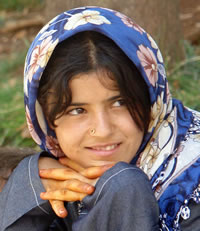
Girl from the ZaZa clan in Turkey derived from the ancient Mede tribe of the Dimili (Picture source: Mani Moradi).
For more information on Kurdish tribes in
Turkey, see Ott Blau (pp. 608-9), Mark Sykes (pp. 451-86), and Badile
Nikitine (pp. 161-62).
Adéaman: Telyâ.
Afyon: Jahânbegli.
Ag¡ri: Sâderli, Khâlati, Haydarânli, Hamadikân, Zilânli, Bâdeli, Âdamânli, Bašmânli, Jalâli, Bâzikli.
Amasya: Aruk.
Ankara: ‘Amarânli, Nâsáerli, Zirikânli, Judikânli, Tirikân.
Bitlis: Mudeki, Khâzali, Hasanânlu, Âtamânikân, Jabbarânli.
Diârbakér: Diârbakri, Musek, Shaykhdudânli, Surkišli, Dersimli, Khâzâli, Bešeri, Tirikân, Purân, Bekirân, Raškutânli.
Elazig¡: Gurus, Kulbaban, Sinân, šmišârt, Behirmâz.
Erzurum: Herka`i, Zirikânli, Hasanânli, Piziânli, Rašvân.
Gaziantep: Delikânli.
Hakâri: Kekâ, Shemsiki, Neri, Hakâri, Hasanânlu, Balikâr, Dinâri.
Kaysari: Hâjibânli.
Kiršehir: ‘Amarânli, Tâburowghli, Barakatli.
Konya: Khalkâni.
MalatÂya: Sinâminli.
Maraš (Mar’aš): Gugarišânli, Kikân, Vâliâni, Nederli, Nâšâdirâ, Dughânli, Delikânli, Jelikânli, Balikânli.
Mardin: Dâkhuri, Tur’âbedin.
Muš: Mâmakânli, Lulânli, Shekerli, Panjinân, Silukân, Selivân, Hasanânli, Azli, Panijâri, Zerzân, Balikân.
Siirt (Se’ert): Mirân, Musek, Kaviân, Dersimli, Dâkhuri, Hosayni, Jaziriân, Panjinân.
Sivâs: Kucheri, Âkhchešmi
Tokat (Toqat): Aruk.
Tunceli (Tunjeli): Milli, Dersimli.
Urfa: Givarân, ‘Aluš, Ùâpkasân, Abu Tâher, Emerzân, Bârân.
Van: Mahmudi, Herka`i, ‘Isâ`i, Yazidi, Sepikânli, Duderi, Khâni, Jelikânli, Tâkuli, Tâpiân, Bârezânli.
Yozgat: Mâkhâni, Khâtunoghli, Tâburoghli.
Khvarvaran & Asuristan (today known as Iraq)
There are still many powerful Kurdish
tribes in Iraq. According to Mohammad-Amin Zaki (pp. 399-410), the most
important Kurdish tribes in Iraq in 1931 were the following. They are
listed according to geographical region (urban center).
Kurdish Jews in Rawanduz,
modern-day Iraq in 1905. Interestingly, many surviving Kurdish Jews from
older generations were able to speak Aramaic.
For more information on the Kurdish tribes of Iraq, see Henry Field (1940), Cecil John Edmonds, and Hasan Arfa.
Arbil: Âko, Dizâ`i, Surchi, Gerdi, Herki,
Bârzân (q.v.), Buli, Shirvân wa Barâdust (q.v.), Zârâri, Khilâni,
Bervâri Bâlâ, Bervâri Ûiri, Khošnâv, Pirân.
Khâneqin: Bâjalân, Zenda, Leylâni, Kâka`i, Shaykh-bazini, Bibâni, Dâwuda, Kâkhevâr, Pâlâni, Kâghânlu.
Kerkuk: Sharafbayâni, Barzenji, Dilo, Tâlebâni, Jabbâri, Shuhân, Zangana, ‘Amarmel, Sâlehi.
Mandali: Qarâ ‘Alus.
Mosul: Sheqqâq, Duski, Zibâri, Misuri, Ârtuš, Sendi.
Solaymâniya: Jâf, Marivâni, Pišdar, Hamâvand, Âvrâmi, and Esmâ’il ‘Azizi.

Kurdish man in northwest Iran
engaged in the worship of Mithras in a Pir’s (mystical leader/master)
sanctuary which acts as a Mithraic temple (Courtesy Kasraian &
Arshi, 1993, Plate 80). Note how he stands below an opening allowing for
the “shining of the light”, almost exactly as seen with the statue in
Ostia, Italy. These particular Kurds are said to pay homage to Mithras
three times a day.
Bibliography
Iraj Afšâr Sistâni, Ilhâ, chadornešinân wa táawâyef-e ‘ašâyeri-e Irân, 2 vols., Tehran, 1987.
Hassan Arfa, The Kurds: An Historical and Political Study, London, 1966.
Sharaf al-Din Bedlisi, Sharaf-nâma, tr.
François Bernard Charmoy as Cheàref-Nâmeh, ou fastes de la nation
kourde, 2 vols., St. Petersburg, 1868-75.
Jane Bestor, “The Kurds of Iranian Baluchistan: A Regional Elite,” M.A. Thesis, McGill University, 1979.
Otto Blau, “Nachrichten über kurdische Stämme,” ZDMG 16, 1862, pp. 607-27.
Clifford E. Bosworth, “Shabânkâra,” in EI2 IX, p. 156.
Cecil John Edmonds, Kurds, Turks and Arabs, London, 1957.
Ebn al-Balkhi, Fârs-nâma, ed. Guy Le
Strange, Cambridge, 1921; geographical section translated by Guy Le
Strange as “Description of the Province of Fars in Persia at the
Beginning of the Fourteenth Century A.D.,” JRAS 1912, pp. 1-30, also
published separately as Asia Society Monograph 14, London, 1912.
Hasan Fasâ`i, Fârs-nâma-ye nâsáeri, lith., 2 vols., Tehran, 1895-96.
Henry Field, Contributions to the Anthropology of Iran, 2 vols., Chicago, 1939.
Idem, The Anthropology of Iraq, 2 vols., Chicago, 1940.
L. S. Fortescue, Military Report on Tehran and Adjacent Provinces of North-Western Persia, Calcutta, 1922.
Albert Houtum-Schindler, Eastern Persian Iraq, London, 1897.
Wladmir Ivanow, “Notes on the Ethnology of Khurasan,” The Geographical Journal 67, January-June 1926, pp. 143-58.
Mas’ud Kayhân, Joghrâfiâ-ye mofasásáal-e Irân, 3 vols., Tehran, 1932-33.
Komisiun-e melli-e Yunesko (UNESCO) dar Irân, Irânšahr, 2 vols., Tehran, 1963-65, I, pp. 117-38.
J. G. Lorimer, Gazetteer of the Persian Gulf, ‘Omân, and Central Arabia, 2 vols.,Calcutta, 1908.
Oskar Mann, Die Mundarten der Lur-Stämme in sudwestlichen Persien, Berlin, 1910.
Mohammad Mardukh Kordestâni, Târikh-e Mardukh: Târikh-e Kord wa Kordestân, 2 vols. in one, Tehran, 1973.
Basile Nikitine, Les Kurdes: e‚tude sociologique et historique, Paris, 1956.
Pierre Oberling, The Turkic Peoples of
Southern Iran, Cleveland, 1960. Idem, The Turkic Peoples of Iranian
Azerbaijan, Cleveland, 1961.
Idem, “The Tribes of Qarâcha Dâgh: A Brief History,” Oriens 17, 1964, pp. 60-95.
Idem, The Qashqâ`i Nomads of Fârs, The Hague, 1974.
Mohammad-Hossein Papoli Yazdi, Le nomadisme dans le nord du Khorassan, Paris, 1991.
Jahângir Qâ`em Maqâmi, “‘Ašâyer-e Khuzestân,” Yâdgâr 3/9, 1946-47, pp. 10-22.
Hyacinth Louis Rabino, “A Journey in
Mazanderan (from Rasht to Sari),”Geographical Journal 42, Jul.-Dec.
1913, pp. 435-54. Idem, Les tribus du Louristan, Paris, 1916.
Idem, “Les provinces caspiennes de la
Perse: le Guilan,” RMM 32, 1916-17, pp. 1-283; tr. by Ja’far Khomâmizâda
as Welâyât-e Dâr-al-Marz-e Gilân, Tehran, 1978.
Hosayn-’Ali Razmârâ, Farhang-e jogrâfiâ`i-e Irân VIII, Tehran, 1953.
Mark Sykes, “The Kurdish Tribes of the
Ottoman Empire,” The Journal of the Royal Anthropological Institute of
Great Britain and Ireland 38, 1908, pp. 451-86.
Percy Molesworth Sykes, Ten Thousand Miles in Persia, London, 1902.
Parviz Varjâvand, Sarzamin-e Qazvin, Tehran, 1970.
Mohammad-Amin Zaki, Kholâsa târikh al-Kord wa’l-Kordestân, Baghdad, 1939.
http://www.kavehfarrokh.com/category/the-kurds/
This article originally appeared in the CAIS (Circle of Ancient Iranian Studies) venue. The CAIS site is hosted by Shapour Suren-Pahlav.
The version printed above is different from that CAIS version in that has accompanying pictures and descriptions.
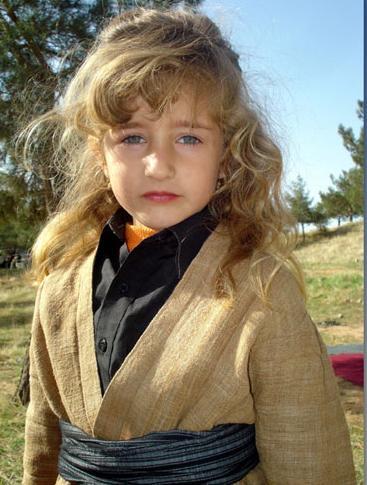



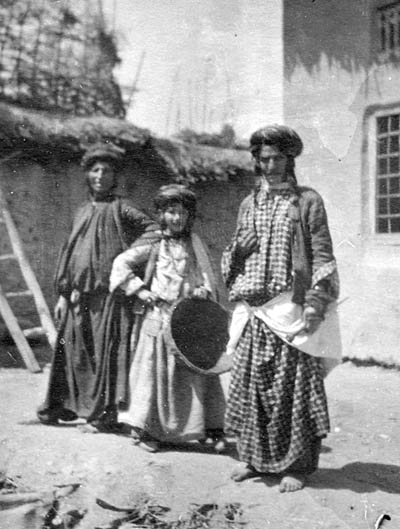
Δεν υπάρχουν σχόλια:
Δημοσίευση σχολίου